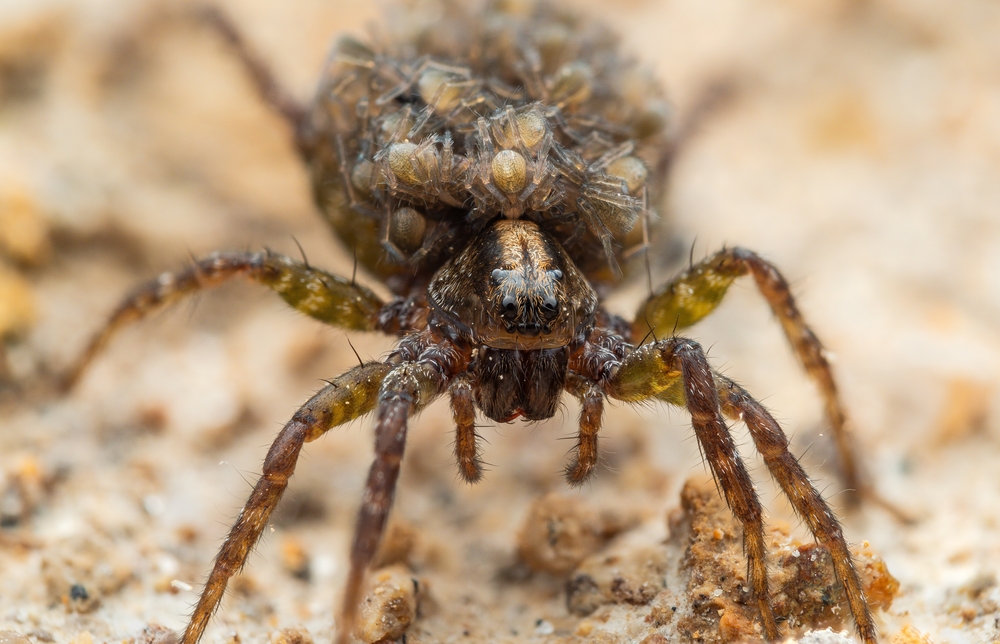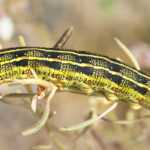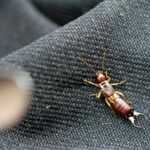Are Wolf Spiders Venomous? Facts You Really Should Know
Curious about wolf spiders? Learn if they are venomous, the risks of their bite, and how to stay safe around them with simple, clear facts.
Are Wolf Spiders Venomous? What You Need to Know
Yes, wolf spiders are venomous; however, their bites are rarely harmful to humans. In this article, we will discuss whether wolf spiders are venomous, their venom, the symptoms of their bites, and what to do if you encounter one.
- Wolf spiders are venomous but pose a low risk to humans; bites typically result in mild symptoms.
- Wolf spider bites can cause redness, swelling, and itching but are usually not serious; allergic reactions are rare.
- Preventing wolf spider encounters involves home maintenance, cleanliness, and using natural repellents like essential oils.
Are Wolf Spiders Venomous?
Wolf spiders are indeed venomous, meaning they can inject venom through their bites. This venom plays a crucial role in their hunting strategy, helping them immobilize prey. However, despite their venomous nature, wolf spiders are not considered a significant threat to humans. Most wolf spider bites result in mild symptoms and are rarely serious.
Unlike brown recluse spiders, whose venom can cause severe reactions, wolf spiders venom is much less potent. This comparison often helps to alleviate fears, as the risk posed by wolf spiders is relatively low. Additionally, wolf spiders are not aggressive towards humans and typically only bite when they feel threatened.
Interestingly, wolf spiders are classified as venomous rather than poisonous. The distinction lies in how the toxins are delivered: venomous animals inject toxins via bites or stings, while poisonous animals release toxins when consumed. This classification reinforces the idea that wolf spiders, while capable of biting, do not pose a significant danger to humans.
Effects of a Wolf Spider Bite
A wolf spider bite can cause a range of wolf spider bite symptoms, typically including:
- redness
- swelling
- itching
- sometimes severe pain
These symptoms are generally mild and manageable, but they can be uncomfortable. The good news is that wolf spiders are not dangerous to humans, and their bites are rarely serious.
Allergic reactions to wolf spider bites are uncommon but not unheard of. If an allergic reaction does occur, it’s usually mild and not life-threatening. Symptoms might include itching, rash, and minor swelling, but these can often be treated with over-the-counter medications.
Monitor the bite site for any signs of worsening symptoms. Seek medical attention if redness, swelling, or pain intensifies, or if you experience difficulty breathing. Persistent symptoms could indicate an infection or a more severe reaction, which would require professional treatment.
How to Treat a Wolf Spider Bite
Treating a wolf spider bite starts with basic first aid. Begin by washing the bite area with warm water and soap to clean the wound and reduce the risk of infection. After cleaning the area, monitor for any signs of worsening symptoms.
Applying a cold compress to the bite site can help alleviate swelling and pain. This can help reduce inflammation and provide some relief. Over-the-counter antihistamines can also be effective in managing itching and discomfort. Pain relievers like ibuprofen or acetaminophen can also ease the pain associated with the bite.
Although most wolf spider bites are not serious, remaining vigilant is essential. Monitor the bite for any severe reactions or signs of an allergic response. If you notice any worsening symptoms or if an allergic reaction occurs, seek medical attention promptly. Being proactive and attentive can ensure a quick recovery and prevent complications.
Are Wolf Spiders Dangerous to Pets?
Pet owners prioritize the safety of their furry friends. Fortunately, wolf spiders do not pose a significant risk to most pets. Their venom is not strong enough to cause serious harm to animals. However, a wolf spider bite may cause mild discomfort in some pets, such as cats, but these reactions are typically not severe.
Bearded dragons and other reptiles can encounter wolf spiders without significant danger. The venom of wolf spiders is insufficient to harm these types of pets. Nevertheless, it’s always a good practice to monitor any pet that may have been bitten, just in case of an unexpected reaction.
Dogs are unlikely to be harmed by consuming a wolf spider due to their fast digestion. While the thought of a dog eating a spider might be unsettling, rest assured that it doesn’t pose a significant health risk. Keeping an eye on your pets and ensuring their living spaces are free of spiders can help prevent any potential issues.
Wolf Spiders vs. Brown Recluse Spiders
It’s easy to confuse wolf spiders with brown recluse spiders, but there are several distinct differences. Wolf spiders have a stout, hairy body, while brown recluse spiders are more slender and have a distinctive violin-shaped marking on their backs. Additionally, wolf spiders have eight eyes arranged in three rows, compared to the brown recluse’s six eyes arranged in pairs.
Behaviorally, wolf spiders and brown recluse spiders are quite different. Wolf spiders chase and stalk their prey, whereas brown recluses build webs and lie in wait for prey to come to them. This hunting behavior of wolf spiders makes them more visible and less likely to be found in dark, undisturbed areas like brown recluses.
Wolf spiders are relatively harmless in terms of venom compared to brown recluse spiders. While wolf spider bites cause mild symptoms, brown recluse bites can lead to necrotic wounds and require medical attention. Recognizing these differences can alleviate unnecessary fears and aid in proper identification.
Identifying Wolf Spiders
Specific physical characteristics help in identifying a wolf spider. These spiders have a hairy body that ranges in color from dark brown to gray, often with distinctive markings or lines. They vary in size, with body lengths ranging from 0.25 inches to over 1 inch, and some can grow as large as 2 inches.
One of the most notable features of wolf spiders is their eye arrangement. They have three rows of eyes: four small eyes on top, two larger eyes in the middle, and two medium-sized eyes at the bottom. These large, reflective eyes are especially helpful for their nocturnal hunting activities.
Wolf spiders are also known for their excellent camouflage abilities. Their gray or brown coloring and stripes allow them to blend seamlessly into their surroundings. Additionally, they possess three tarsal claws at the end of their legs, a feature that sets them apart from other spiders. Recognizing these traits can help you identify wolf spiders more accurately.
Where Do Wolf Spiders Live?
Wolf spiders are highly adaptable and can be found in various environments across the U.S. and around the world, including forests, deserts, and gardens. They are commonly seen in residential areas, particularly in backyards with plenty of leaf litter or debris.
During the colder months, wolf spiders often seek shelter indoors, making basements, crawl spaces, and garages prime locations for them to hibernate. These spiders prefer ground-level habitats and can often be found in holes and burrows. While they usually stay on the ground, they can climb if necessary to find food or escape threats.
Knowing their preferred habitats helps homeowners take preventive measures to avoid unwanted encounters with these spiders. A clean and tidy environment, both indoors and outdoors, can significantly reduce the likelihood of wolf spiders taking up residence.
Preventing Wolf Spider Bites
Home maintenance and personal precautions are key to preventing wolf spider bites. Sealing cracks and gaps around doors and windows limits their entry into your home. Regular upkeep and cleanliness can also deter wolf spiders by eliminating their hiding spots.
Essential oils like peppermint oil can be effective at repelling wolf spiders when sprayed in areas they frequent. Diatomaceous earth is another useful tool; it dehydrates and kills spiders upon contact. Gloves can further reduce the risk of bites when gardening or handling wood.
Using glue boards in areas where spider activity is observed can help trap and remove wolf spiders. Implementing these strategies creates a less inviting environment for wolf spiders and minimizes the chances of encountering them.
What Attracts Wolf Spiders Indoors?
The presence of insects, their main food source, primarily attracts wolf spiders to homes. During colder months, they seek warmth and shelter indoors, often ending up in basements, crawl spaces, and garages. High humidity and moisture levels in these areas can make them even more appealing. Wolf spiders feed on these insects, which further draws them inside.
Cluttered spaces provide ideal hiding spots for wolf spiders, making garages and attics particularly attractive. Keeping these areas clean and organized can help deter them from settling inside your home.
EPA-approved insect repellents can help keep wolf spiders away, and shaking out clothing and shoes before use can prevent accidental encounters. Wearing long sleeves and pants when walking in wooded or overgrown areas can also minimize contact with spiders.
Safe Removal of Wolf Spiders
You can safely and humanely remove a wolf spider from your home. The best method is to use a container to trap the spider and then release it outside. This approach ensures that the spider is removed without harm and reduces the risk of re-infestation.
When you spot a wolf spider inside, handle it carefully. Avoid squashing the spider, as this can create a mess and potentially attract other pests. Instead, use a piece of paper or a card to gently guide the spider into the container.
A clean and clutter-free home helps prevent future encounters with wolf spiders. Regularly inspecting areas where spiders are likely to hide, such as basements and garages, can also help keep your home pest-free.
While wolf spiders are venomous, they pose little threat to humans and pets. Their bites usually result in mild symptoms, and proper treatment can ensure a quick recovery. Knowing how to identify and prevent wolf spiders can help you avoid unwanted encounters.
Frequently Asked Questions
Are wolf spiders poisonous?
Wolf spiders are not poisonous; they are venomous, but their venom is not harmful to humans. They will bite if threatened, but this is rare, as they typically prefer to flee.
Why shouldn’t you squish a wolf spider?
You shouldn’t squish a wolf spider because it may be carrying her young, which could scatter and invade your home. Protecting her, and consequently the environment, is a wise choice.
What will happen if a wolf spider bites you?
A wolf spider bite typically results in mild symptoms such as a red bump, swelling, and possible pain or itching. However, if you notice severe symptoms or signs of an allergic reaction, seek medical attention promptly.
Are wolf spiders dangerous to humans?
Wolf spiders are not considered dangerous to humans, as their bites typically result in mild symptoms like redness and swelling that can be managed with basic first aid.
How can I identify a wolf spider?
You can identify a wolf spider by its hairy body, usually brown to gray with distinct markings, and its unique arrangement of eight eyes in three rows, which includes large reflective eyes.



